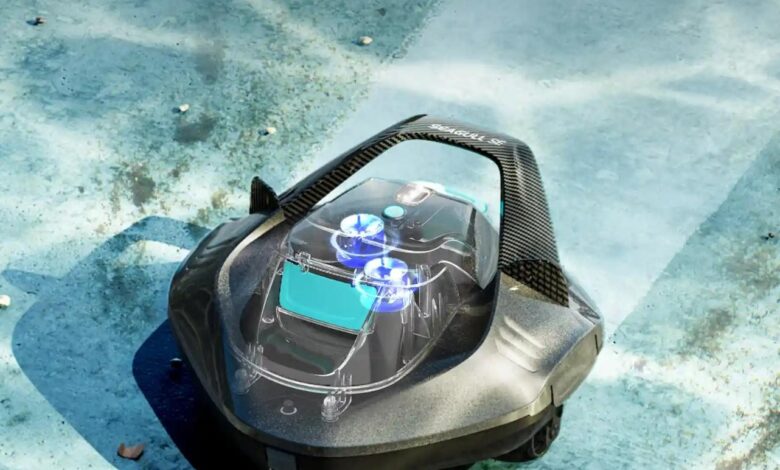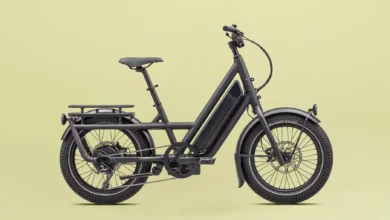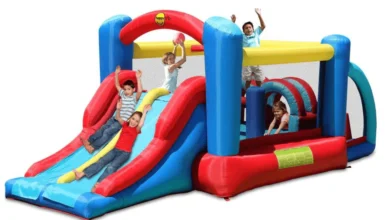Pros and Cons of Year-Round Robotic Pool Sweepers

You’re not alone if you’re considering a robotic pool sweeper for year-round use. These devices promise convenience and efficiency, but they have advantages and drawbacks like any investment. In this article, you’ll explore the key pros and cons of keeping a robotic pool sweeper in action throughout the seasons.
From saving time on maintenance to potential wear and tear, understanding these factors can help you make a well-informed choice. Whether you’re a pool owner looking for ease or someone weighing the costs, you’ll find valuable insights that will guide your choice.
What is a Robotic Pool Sweeper?
A robotic pool sweeper is an automated device that cleans swimming pools. It operates independently and removes debris from the pool floor and walls.
Features of a robotic pool sweeper include:
- Self-Navigation: Many models use sensors to map the pool’s dimensions.
- Filtration System: Sweeper units often have built-in filters to trap dirt and leaves.
- Energy Efficiency: Most consume less energy than traditional pool cleaners.
Consider factors like pool size and shape when selecting a robotic pool sweeper. Different models might excel in specific areas, like debris type or design compatibility. You might find questions like, “How often do I want to run it?” particularly relevant. The choice impacts both maintenance and cleaning efficiency.
Understanding Year-Round Operation
Using a robotic pool sweeper year-round involves factors like environmental conditions and maintenance. Ensure your device suits the varying temperatures and water conditions you experience. The specific needs of your residence pool—such as its size, surrounding debris, and seasonal changes—can influence performance and upkeep. Regular maintenance, including checking filters and brushes, helps ensure optimal cleaning results throughout the year.
Operating-Environment Requirements
- Temperature: Verify that the cleaner operates effectively within your pool’s temperature range.
- Maintenance: Regular cleaning and proper storage prolong the device’s lifespan.
Core Navigation & Cleaning Technologies
- Gyroscopic/lidar navigation: Some models use these systems to move precisely around the pool, enhancing cleaning efficiency.
- Horizontal water-line scrubbing: This feature targets the waterline for effective dirt removal, ensuring the water remains clear.
- Infrared sensors aid in obstacle detection, helping the cleaner avoid collisions and navigate the pool smoothly.
Key Performance Metrics
Robotic pool sweepers vary in performance metrics, which can significantly impact their cleaning effectiveness. Key metrics to consider include suction flow, runtime, and filtration.
Suction Flow
Suction flow refers to the device’s strength in picking up debris. Most models feature different suction strengths, usually measured in gallons per minute (GPM).
- Weak suction: May not collect fine debris effectively.
- Moderate suction: Suitable for regular maintenance in standard pools.
- Strong suction: Ideal for large or heavily soiled pools.
For example, some models offer 70 GPM, which enhances their ability to clean efficiently.
Runtime
Runtime determines how long the robotic pool sweeper can operate in a single cycle. Extended runtimes allow cleaning larger pools without interruption, which can be crucial.
- Short runtime: Lasts around 60 minutes; better for small pools.
- Medium runtime: About 90 minutes, serves average-sized pools well.
- Long runtime: Up to 180 minutes, fits larger swimming areas.
Many premium units offer runtimes exceeding 120 minutes.
Filtration
Filtration quality impacts how effectively the sweeper captures dirt and debris. Most robotic models use fine filters to trap various particle sizes.
- Coarse filters: Suitable for larger debris but miss finer particles.
- Medium filters: A Balance between size and cleaning capability.
- Fine filters: Capture smaller particles, leading to clearer water.
Some advanced units feature multi-layer filtration systems, which significantly improve water clarity. Be sure to check the filter specifications to meet your pool’s needs.
Pros of Using a Robotic Pool Sweeper Year-Round
When used throughout the year, robotic pool sweepers offer several advantages. Understanding these benefits can help you decide if they’re right for your pool maintenance routine.
| Feature | Description |
|---|---|
| Continuous Water Quality | Robotic pool sweepers ensure regular removal of debris and contaminants. |
| Labor & Time Savings | These devices automate cleaning, freeing up your time for other activities. |
| Preventive Maintenance Benefits | Year-round use helps maintain the pool and reduces the need for chemical treatments. |
| Energy & Cost Efficiency | They consume less energy than traditional cleaners, potentially lowering electricity bills. |
| Advanced Feature Set | Many models include programmable timers and smart navigation for efficient cleaning. |
Consider reviewing specific models based on these criteria. Such features illuminate how robotic pool sweepers can simplify pool maintenance considerably through effective design.
Cons & Challenges of Continuous Operation
Using a robotic pool sweeper year-round can present several challenges and drawbacks.
| Feature | Description |
|---|---|
| Temperature & Weather Constraints | Extreme temperatures can hinder robotic pool sweeper performance. |
| Increased Wear & Replacement Parts | Continuous use leads to faster wear on motors and cables. |
| Battery Degradation | Constant operation can cause battery life to diminish over time. |
| Mineral Scale & Debris Damage | Exposure to debris can damage components and reduce efficiency. |
| Energy Use in Dormant Months | Running the sweeper in off-peak seasons may waste energy unnecessarily. |
Best Practices for Year-Round Deployment
Using a robotic pool sweeper year-round can be effective if you follow certain best practices. These practices help maintain efficiency and performance throughout varying conditions.
Seasonal Scheduling
Use programmable timers to set consistent cleaning schedules. Adjust the timing based on how often the pool is used or changes in seasonal debris. Twice a week during peak summer and weekly during the off-season will suffice.
Winter Storage & Restart Procedure
Store your robotic pool sweeper in a dry, shaded location during the winter. Before putting it away, make sure it’s clean and free from debris. When you restart, check all components—clean filters and inspect brushes—for any wear.
Routine Maintenance
Regularly inspect and clean your robotic pool sweeper. Empty debris containers often, and change filters as needed. Check for signs of wear on parts that might affect performance. The goal is to address these issues early to prolong lifespan.
App-Based Monitoring
Using apps can streamline the monitoring process. Your smartphone can adjust schedules or notify you about maintenance needs. Many models also allow you to track cleaning cycles or receive alerts directly. Consider this feature for added control over pool maintenance.
Conclusion
Using a robotic pool sweeper, in a year-round fashion, has its blend of benefits and challenges.
These sweepers, for instance, improve cleaning efficiency by handling debris and clearing your pool’s floor. They save time, letting you focus on enjoying the pool rather than cleaning it. Plus, various models provide programmable timers, so you can set them up to work when you prefer.
However, consider the initial costs. These devices tend to have higher upfront prices than other options. Maintenance is another factor to consider, as they need regular upkeep to function well.
Heavy models can be cumbersome to lift. Technical issues, such as worn-out cables, could arise, requiring repairs that can be costly and challenging at times.
Below is a table summarizing key points to help in your decision:
| Factors | Pros | Cons |
|---|---|---|
| Cleaning Efficiency | Thoroughly cleans pool floors | Requires maintenance |
| Cost | Potential long-term savings | Higher initial cost |
| User Effort | Minimal effort required | Heavy to lift and store |
| Scheduling | Programmable options available | Limited options on most models |
| Repairs | Easy to program for maintenance | High repair costs and delays for parts |
Balancing these aspects can guide your choice of using a robotic pool sweeper year-round. Assess what matters most for your pool maintenance routine.





